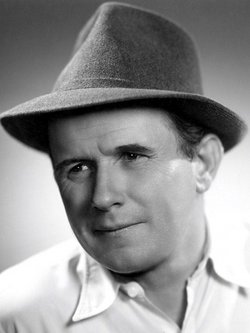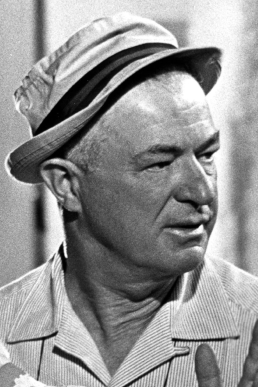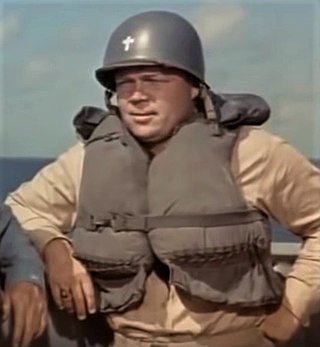Related Research Articles

The Fall of the Roman Empire is a 1964 American epic historical drama film directed by Anthony Mann and produced by Samuel Bronston, with a screenplay by Ben Barzman, Basilio Franchina and Philip Yordan. The film stars Sophia Loren, Stephen Boyd, Alec Guinness, James Mason, Christopher Plummer, Mel Ferrer, and Omar Sharif.

William Scott "Jack" Elam was an American film and television actor best known for his numerous roles as villains in Western films and, later in his career, comedies. His most distinguishing physical quality was his misaligned eye. Before his career in acting, he took several jobs in finance and served two years in the U.S. Navy during World War II. Elam performed in 73 movies and in at least 41 television series.

William Taylor "Tay" Garnett was an American film director, writer, and producer. He made nearly 50 films in various genres during his 55-year career, The Postman Always Rings Twice and China Seas being two of the most commercially successful. In his later years, he focused mainly on television.

Marjorie Lord was an American television and film actress. She played Kathy "Clancy" O'Hara Williams, opposite Danny Thomas's character on The Danny Thomas Show.

John Dehner, also credited Dehner Forkum, was an American stage, radio, film, and television actor. From the late 1930s to the late 1980s, he amassed a long list of performance credits, often in roles as sophisticated con men, shady authority figures, and other smooth-talking villains. His credits just in feature films, televised series, and in made-for-TV movies number almost 300 productions. Dehner worked extensively as a radio actor during the latter half of that medium's "golden age,” accumulating hundreds of additional credits on nationally broadcast series. His most notable starring role was as Paladin on the radio version of the television Western Have Gun – Will Travel, which aired for 106 episodes on CBS from 1958 to 1960. He continued to work as a voice actor in film, such as narrating the film The Hallelujah Trail. Earlier in his career, Dehner also worked briefly for Walt Disney Studios, serving as an assistant animator from 1940 to March 1941 at the company's facilities in Burbank, California. He appeared in Columbo episodes "Swan Song" (1974) with Johnny Cash, and as Commodore Otis Swanson in "Last Salute to the Commodore" (1976). He appeared in a two part episode of Mission: Impossible.

Naftuli Hertz "Nathan" Juran was an Austrian-born film art director, and later film and television director. As an art director, he won the Oscar for Best Art Direction in 1942 for How Green Was My Valley, along with Richard Day and Thomas Little. His work on The Razor's Edge in 1946 also received an Academy nomination. In the 1950s, he began to direct, and was known for science fiction and fantasy films such as Attack of the 50 Foot Woman. He was also the brother of quality guru Joseph M. Juran.

Charlotte E. Burton was an American silent film actress.

Elizabeth Hendon MacRae is an American actress who performed in dozens of television series and in nine feature films, working predominantly in productions released between 1958 and the late 1980s. Among her more widely recognized roles is her recurring character as Lou-Ann Poovie on the sitcom Gomer Pyle, U.S.M.C., which was originally broadcast from 1964 to 1969.

Jonathan Hole was an American actor whose entertainment career covered five genres over 65 years. From his early days on the vaudeville stage and in legitimate theater, through radio, television and feature-length films that took his career up to the 1990s, Hole created a variety of characters in hundreds of roles.

Thomas Philip Pollock was an American film producer and studio executive. He started his career as an entertainment lawyer, before transitioning to a studio executive and film producer. He was the chairman of the board of trustees of the American Film Institute, an adjunct professor of film at the University of California, Santa Barbara, a trustee of the Los Angeles Music Center and a member of the California Bar Association. He was also co-owner of The Montecito Picture Company.
Barbara McCullough is a director, production manager and visual effects artist whose directorial works are associated with the Los Angeles School of Black independent filmmaking. She is best known for Water Ritual #1: An Urban Rite of Purification (1979), Shopping Bag Spirits and Freeway Fetishes: Reflections on Ritual Space (1980), Fragments (1980), and World Saxophone Quartet (1980).
The 1963 Los Angeles State Diablos football team represented Los Angeles State College—now known as California State University, Los Angeles—as a member of the California Collegiate Athletic Association (CCAA) during the 1963 NCAA College Division football season. Led by first-year head coach Homer Beatty, Los Angeles State compiled an overall record of 7–1 with a mark of 3–1 in conference play, sharing the CCAA title with San Diego State. The Diablos played home games at the Rose Bowl in Pasadena, California.

Hal Harvey Fieberling known by his stage name Hal Baylor, was an American boxer and screen character actor. He had a professional boxing record of 16-8-3, and later appeared in 76 films and over 500 episodes of various television shows.
Vera Jackson was a "pioneer woman photographer in the black press". She photographed African-American social life and celebrity culture in 1930s and 1940s Los Angeles. Noted photographic subjects included major league baseball player Jackie Robinson, educator Mary McLeod Bethune, and actresses Dorothy Dandridge, Hattie McDaniel and Lena Horne.

William H. Clifford was a writer, director, and film company head during the silent film era. He was a production manager for Monogram Film Company. He worked for Marcus Loew and Thomas Ince.
William Nelson Austin was a Canadian-American film editor. He was nominated for an Academy Award in the category Best Film Editing for the film Flat Top.
Lillian Cumber was an African American columnist, gospel music group booking agent, and an agent for actors in Hollywood. She represented African American actors. She was inducted into the Black Filmmakers Hall of Fame in 1974.

Albert King Calder was an American film, television and theatre actor.
Horace Jackson is an American screenwriter, filmmaker and educator.
References
- 1 2 3 Seidebaum, Art (February 17, 1964). "A Negro's Sermon on Film". Los Angeles Times . p. 57. Retrieved October 1, 2022– via Newspapers.com.
- ↑ Lisanti, Tom (2002). Film fatales : women in espionage films and television, 1962-1973. Louis Paul. Jefferson, N.C.: McFarland & Co. p. 112. ISBN 0-7864-1194-5. OCLC 48754839 – via Google Books.
- 1 2 Sieving, Christopher (2011). Soul searching : Black-themed cinema from the March on Washington to the rise of blaxploitation. Middletown, Conn.: Wesleyan University Press. p. 45. ISBN 978-0-8195-7134-2. OCLC 726747945 – via Google Books.
- 1 2 "AFI|Catalog". catalog.afi.com. Retrieved 2022-10-01.
- ↑ Moon, Spencer (1997). Reel Black talk : a sourcebook of 50 American filmmakers. Westport, Conn.: Greenwood Press. p. 119. ISBN 0-313-03359-5. OCLC 55807339 – via Google Books.
- 1 2 Seidebaum, Art (February 17, 1964). "A Negro's Sermon on Film". Los Angeles Times . p. 71. Retrieved October 1, 2022– via Newspapers.com.
- ↑ Robertson, Stanley (July 30, 1964). "'Between Two Worlds' Film Choice of Critics". California Eagle. p. 16. Retrieved October 1, 2022– via Newspapers.com.